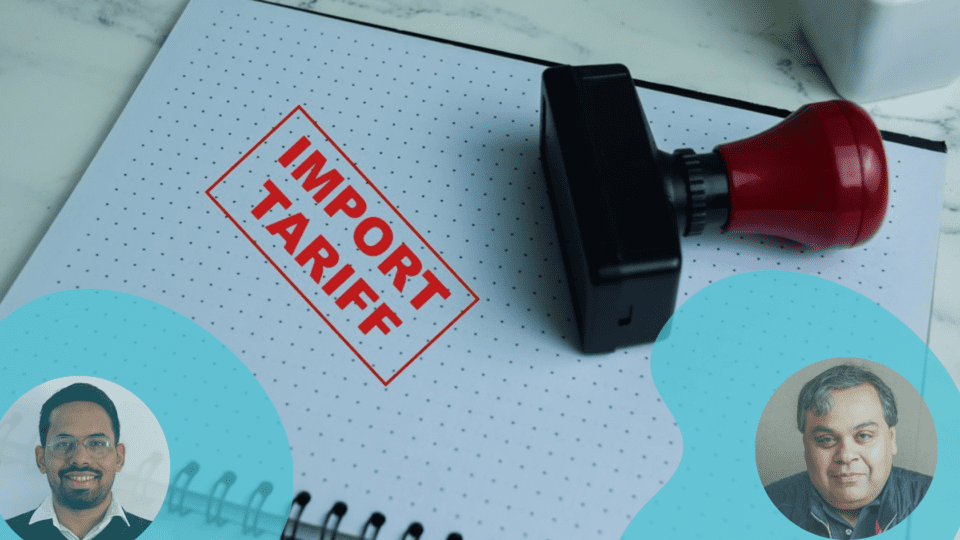The re-emergence of tariffs on the global trade horizon has once again thrust the retail industry into uncertainty. While policymakers often champion tariffs as a mechanism to protect domestic industries, their ripple effects are far-reaching, inflating costs, disrupting supply chains and, ultimately, burdening consumers. As retailers brace for this looming economic shift, learning from past experiences and implementing forward-thinking strategies is paramount to mitigating risk and seizing opportunities amidst adversity.
The Scars of the 2018-2019 U.S.-China Trade War: A Case Study in Disruption
The U.S.-China trade war of 2018-2019 offers a cautionary tale about the far-reaching consequences of tariffs. During this period, the U.S. imposed tariffs on more than $350 billion worth of Chinese imports, impacting everything from furniture to apparel and footwear. In 2018, more than one-third of apparel imports flowing into the U.S. came from China, and more than half of footwear arriving on American shores originated there, too. Price-sensitive products suffered a drop in demand as consumers struggled to shoulder the rising cost of tariff-stricken goods.
Empirical research, including a study from the National Bureau of Economic Research (NBER), found that tariffs were almost entirely passed on to U.S. consumers, driving up prices across key retail categories. For instance, households incurred an additional $1,277 annually in tariff-related costs, with discretionary goods like furniture and clothing experiencing some of the steepest price hikes.
Contrary to economic theory, which predicted foreign exporters would bear a share of the burden by reducing their prices, U.S. businesses and consumers shouldered nearly all the added costs. Supply chain dependencies played a significant role: industries like furniture and apparel, which heavily relied on Chinese imports, struggled to find alternative sources of supply in the short term. This lack of diversification amplified the impact, leaving retailers with few options to shield themselves or their customers.
Why Today’s Tariffs Pose Even Greater Risks
While the lessons of 2018-2019 provide valuable insights, today’s economic landscape presents unique challenges that could amplify the effects of new tariffs
First, post-pandemic supply chains remain dangerously fragile. The lingering effects of the COVID-19 pandemic have left supply chains strained. Many retailers face higher logistics costs, supplier bottlenecks and labor shortages, making them more vulnerable to disruptions. Dependence on alternative hubs, such as Vietnam or India, has increased, but these regions lack the capacity to fully replace China’s manufacturing dominance.
Despite the Fed’s best efforts, inflationary pressures have yet to fully recede into the rearview mirror. Introducing tariffs on consumer goods could further escalate prices, reigniting inflation at a time when consumer budgets are already stretched painfully thin.
Weakened consumer spending is another factor to watch. With rising credit card debt and high-interest rates reducing disposable income, consumers are showing signs of hesitation in discretionary spending. Tariff-related price increases could exacerbate this trend, leading to diminished demand in categories like apparel, footwear and home goods.
Geopolitical instability seems to be the new normal. Global trade dynamics are becoming increasingly complex, with economic alliances and political tensions introducing new risks. Retailers must navigate an environment where geopolitical uncertainty adds an additional layer of unpredictability.
Building Resilience for the Future
The complexity of navigating the return of tariffs underscores the importance of adopting proactive strategies that strengthen supply chain networks and foster deeper customer loyalty.
In the short term, retailers can conduct a price elasticity analysis to assess how sensitive demand is to price changes. Incremental price increases on inelastic goods can protect margins, while promotions on elastic goods can sustain demand. Promotional campaigns including strategic discounts and bundles can offset consumer price sensitivity and clear inventory. This is also the moment to renegotiate supplier contracts to share the cost burden, secure discounts, defer payments or temporarily freeze prices.
In the long term, companies should look to diversify supply chains by shifting sourcing to alternative markets like Vietnam, India and Mexico. Nearshoring production can reduce logistical risks and tariffs. Investing in technology like predictive analytics to simulate tariff scenarios can optimize sourcing, inventory and pricing dynamically. Strengthen customer loyalty using personalized rewards and exclusive offers to retain customers and maintain demand despite rising prices. And finally, conduct scenario planning by building models to prepare for multiple outcomes, prioritizing investments in high-margin categories and diversifying risk.
A Strategic Imperative
As the retail industry braces for this new wave of tariffs, the stakes are higher than ever. Success will depend on the ability to adapt quickly, leverage technology and implement thoughtful strategies that mitigate risks while driving resilience.
By learning from the past and embracing innovation, retailers can navigate the challenges of tariffs and position themselves to emerge stronger in an uncertain future.
Rishabh Dubey is an Implementation Manager at Impact Analytics with over nine years of experience in the retail and supply chain industry. His expertise spans consulting, data science and implementation, positioning him as a trusted partner in delivering impactful, data-driven solutions. Prashant Agrawal is the visionary CEO of Impact Analytics™, a software and services company that has been leading innovation rooted in AI for almost a decade. Since founding the company, Agrawal’s firm belief that cutting-edge artificial intelligence and machine learning can be game changers for retail has become a reality. For almost a decade, Impact Analytics has notably transformed the grocery industry, along with the fashion and CPG sectors, by driving data-driven approaches that meet consumers’ evolving needs. An Ernst & Young Entrepreneur of the Year award finalist in 2023 and 2024, Agrawal is a serial entrepreneur with experience at McKinsey & Company and Boston Consulting Group. He has been a columnist and contributing editor for GQ India, a columnist for Mint-WSJ, and has contributed op-eds to the NYT, FT, WSJ, and CNBC. An alum of Columbia University, his commitment to nurturing future leaders led him back to his alma mater as a professor. He spearheads the university’s pioneering course on AI and advanced analytics in retail, imparting his wealth of knowledge and passion to inspire the next generation of innovators.




